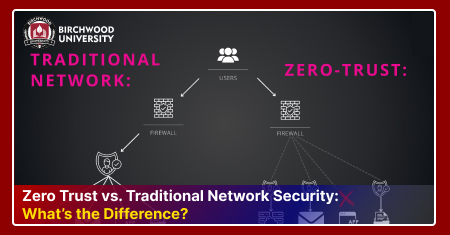How do I prepare for a masters in data science in 2024?
Apr 3, 2024The year 2024 stands as a pivotal year for the aspiring data scientists. With data permeating every facet of our lives, the demand for experts who can extract meaningful insights and translate them into actionable knowledge has never been stronger. A Master of Science in Data Science (MSDS) program serves as a launchpad for such individuals, equipping them with theoretical foundations, practical skills, and industry-specific knowledge to understand the vast data sets and emerge as a valuable asset in organizations across diverse sectors. This comprehensive guide will help you with the key steps you can take in 2024 to confidently approach a Master of Science in Data Science and plan the groundwork for a successful future in this field.
Building Your Foundational Bricks: Mathematics and Statistics
Data science, at its core, is about understanding and manipulating data to derive insight. This requires a solid foundation in the language of numbers: mathematics and statistics. If you haven't already, brush up on any concepts like:
- Mathematics: Linear algebra (matrix operations, vector spaces), calculus (differentiation, integration, optimization), probability (random variable, distributions, statistical, inference).
- Statistics: Descriptive statistics (measures of central tendency and dispersion), probability distributions (normal, binomial, Poisson), hypothesis testing, regression analysis (simple, multiple).
Mastering the Programming Language of Data Science:
In the data science arena, Python reigns supreme. Its versatility, extensive libraries, and large community make it the go-to tool for data wrangling, analysis, and modeling. Here's how you can become proficient in Python:
- Start with the basics: Learn about Python syntax, data structures (lists, dictionaries), and control flow (if/else statements, loops). An effective starting point can be found in online tutorials and courses designed for beginners.
- Dive Deeper into libraries: Master essential libraries like NumPy (numerical computing), pandas (data manipulation), and Matplotib (data visualization). Numerous online resources and interactive tutorials can guide your learning.
- Practice makes Perfect: Engage in real-world projects. Analyze personal finance data, build a web scraper to extract information from websites, or participate in online coding challenges.
Expanding your Data Toolbox: More than Python
While Python serves as the main toolbelt, a well-rounded data scientist needs additional tools in their arsenal. Consider exploring the following:
- SQL: This language queries and manipulates data stored in relational databases. Platforms like SQLite and MySQL offer free access for practice. Online tutorials and courses can guide you through basic and advanced SQL concepts.
- Excel: Although often considered a spreadsheet tool, Excel offers powerful data analysis capabilities. Master functions like pivot tables, data filters, and formulas to manipulate and analyze datasets effectively.
- Data Visualization Tools: Effectively communicating insights is crucial. Explore tools like Tableau or Power BI to create compelling visualizations (charts, graphs, dashboards) that tell a story with your data. Numerous online resources and initiative tutorials can help you get started.
Data Science Certification Courses
While not mandatory, data science certification courses can offer structured learning paths and industry-recognized credentials. These can enhance your application and demonstrate your commitment to the field. Here's what to consider:
- Reputable Providers: Look for courses from established platforms to providers who offer courses developed by experts and often partner with leading universities and companies.
- Course Content: Choose courses aligned with your interests and skill gaps. Options range from data analysis fundamentals to deep learning or natural language processing (NLP).
- Industry Recognition: Ensure the chosen certification holds value in the industry. Research employer preferences and choose certifications aligned with specific job roles or domains.
Finding your Perfect Program:
With your foundational skills developed and tools at your disposal, it's time to learn about the insightful world of Master's in Data Science programs. Research is a must, you can start by compelling a list of potential programs and utilizing the university website, online rankings, and program directories.
- Program Curriculum: Does it cover core data science areas like statistics, machine learning, and data visualization? Are there specialized tracks or elective options aligning with your interest?
- Faculty Expertise: Does the program boast renowned faculty with relevant research experience and industry connections?
- Industry Partnership: Does the program collaborate with companies for internships or research opportunities? Are alumni well-placed in leading data science roles?
- Career Support Service: Does the program offer career counseling, resume workshops, and job placement assistance?
- Tuition Costs and Financial aid options: Compare program costs and scholarships, grants, or loan options available.
- Attend Information Sessions: Virtual or in-person information sessions offer invaluable insights from program directors, faculty, and current students. Ask detailed questions to learn about the program's culture, teaching style, and career support.
- Connect with current students and alumni: Utilize online forums, alumni networks, or social media to connect with current students and alumni. Gain firsthand perspective =s on the program's strengths and challenges, course content, and career outcomes.
The Application Process:
A strong application showcases your genuine interest in data science and your potential to succeed in the program. Here's how to differentiate your application:
- Highlight relevant experience: Include work experience, research projects, or personal projects and research demonstrating your analytical skills and problem-solving abilities. Whenever possible, use data and facts to quantify your accomplishments.
- Craft a Compelling Personal Statement: Use this opportunity to talk about your talent and aspirations. Express your passion for data science, highlight specific program aspects that resonate with you, and articulate your career aspirations.
- Secure Strong Letters of Recommendation: Request letters from professors, supervisors, or mentors who can vouch for your academic and professional abilities. Choose individuals familiar with your data science aspirations and goals.
Staying Updated in the Ever-Evolving Data Landscape:
The data science field is a dynamic one, constantly evolving with new technologies and trends. To stay ahead of the curve:
- Subscribe to relevant blogs and newsletters: Follow thought leaders in the field and stay updated about emerging trends, research breakthroughs, and best practices.
- Attend industry conferences and meetups: Network with other data scientists, learn from industry experts, and gain detailed information about real-world applications of data science.
- Contribute to open-source projects: Take some open-source projects and data science programs on online platforms. This allows you to collaborate with other data scientists, learn new skills, and contribute to the community.






